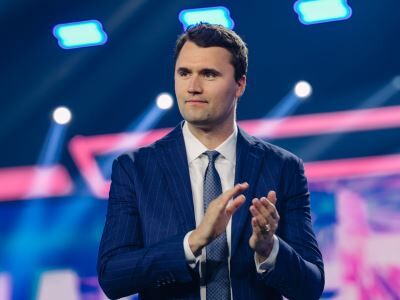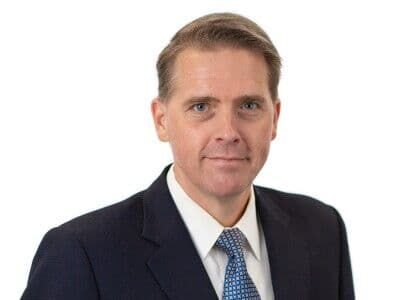Serbia’s Aleksandar Vučić clings to power – but protests highlight the danger of stubborn leadership
News > Politics & Government News

Audio By Carbonatix
8:34 AM on Monday, September 29
By Keith Brown,Hanna Begić
(The Conversation is an independent and nonprofit source of news, analysis and commentary from academic experts.)
Keith Brown, Arizona State University and Hanna Begić, Arizona State University
(THE CONVERSATION) In Serbia, there is a word for a form of stubbornness that sees someone act out of spite or defiance rather than yield to the will of others: “inat.”
It’s something Serbian President Aleksandar Vučić is showing remarkable levels of right now.
For almost a year, anti-government protests have roiled the Balkan nation. They intensified over summer 2025, culminating in angry clashes between students and police in August and September.
But Vučić has stood firm in the face of growing calls for his resignation. In fact, as scholars of politics and historyin Southeast Europe, we have watched Vučić take Serbia even further down an authoritarian path. In so doing, he is drawing from the well-worn playbook of autocratic leaders past and present – not least his former boss Slobodan Milošević and Vladimir Putin, the Russian leader Vučić openly admires.
Yet, while Vučić can draw on support from Putin and fellow authoritarians overseas, he is losing legitimacy at home. Opposing him is a new generation of civic activists who have won the Serbian public’s backing by reclaiming “inat” as force for positive change.
Unmoved by a movement
The immediate trigger for the ongoing unrest came in November 2024 with the deadly collapse of a train station canopy in Novi Sad, a city in northern Serbia.
Renovated with funding from China’s Belt and Road Initiative, the canopy was one of many projects touted by Vučić’s government as evidence of its success in attracting foreign investment. The accident’s 16 deaths, however, served to sharpen questions about corruption, failures of oversight and government accountability.
Student protests gathered momentum through winter and into spring. One demonstration, on March 15, saw more than 300,000 people turn out in Belgrade. Activists have also employed civil disobedience tactics, like staging pop-up roadblocks in Serbian cities, to maintain pressure on the government.
But Vučić has remained obdurate. On Sept. 1, while large crowds gathered in Belgrade and other Serbian cities, Vučić joined Putin and other leaders critical of Western-style democracy at a large military parade in Beijing.
Then on Sept. 20, Vučić staged his own show of strength, with soldiers and tanks taking part in a military parade in Belgrade as Russian-bought MiG-29 fighter planes flew overhead.
From reform to repression
Vučić’s reaction to the protests and his cozying up to leaders of Russia and China reveal how the Serbian leader’s politics have changed.
He was once perceived as a pro-European reformer. Indeed, Vučić and his Serbian Progressive Party campaigned on a pro-European Union platform in the 2012 election that brought them to power.
First serving as deputy prime minister before becoming prime minister in 2014, Vučić won plaudits for seeking to resolve long-standing tensions over Kosovo’s status as a sovereign country. At that time, it was Vučić who led his country’s negotiations with the EU over a normalization of relations between Serbia and its former province.
Vučić also showed willingness to improve Serbia’s ties with neighboring Bosnia-Herzegovina. Whereas many Serbian citizens still felt primary affinity for the Serb-dominated Republika Srpska, whose armed forces committed genocide at Srebrenica in 1995, Vučić risked domestic censure when, in 2015, he labeled that massacre of Bosniak men and boys by Serbian paramilitaries a “monstrous crime.” Vučić also showed up at Srebrenica to pay his respects to the victims, despite local hostility.
Those diplomatic gestures, along with his success in attracting foreign investment, won Vučić international praise as an effective reformer. Serbian voters, likewise, acknowledged the economic stability and the country’s improved reputation.
Backtracking on record
Those assessments started to change in earnest, however, after Vučić secured election as president in 2017. Critics say that he has leveraged his position to amass power and influence, mimicking methods familiar to those living under authoritarian-leaning governments in Hungary and Russia.
Meanwhile, the U.K.’s Brexit vote in 2016, the election of Donald Trump in 2016 and then the global disruption of the COVID-19 pandemic all changed the dynamics of the international community, reducing outside pressure that had advanced democratic norms.
What followed in Serbia was backsliding on democracy. Serbia’s once-vibrant media now operates as government cheerleader. Independent journalism outlets have faced harassment, censorship and lawsuits as part of a state-sponsored campaign of censorship.
Meanwhile, on the diplomatic front, Vučić changed his tune on Kosovo. He now pledges to protect the interests of the breakaway province’s Serbs and portrays Kosovo’s Albanian leader, Albin Kurti, as the obstacle to any normalization deal.
On Bosnia-Herzegovina, Vučić has also backtracked, expressing support for long-time Bosnian Serb leader Milorad Dodik – who has been barred from office by the country’s constitutional court, but defies that ruling.
To Serbian audiences, Vučiċ accuses the EU of duplicity and anti-Serbian prejudice. Meanwhile, he smears the student-led movement as a Western-led “color revolution” aimed at politically motivated regime change. Critics are “fascists” and “foreign mercenaries.”
Europe gets wise to Vučiċ
In all this, Vučiċ has drawn on Kremlin talking points and an authoritarian playbook to distract attention away from his government’s practices. He and his allies cast the current protests not as a movement built on grassroots mobilization, but as the result of meddling by foreign agents.
In taking this authoritarian turn, Vučić invites critics to see parallels with Milošević, under whom the current president served in the 1990s as minister of information. Milošević, who died while on trial for war crimes, did much to inflame Serbian nationalism in the early 1990s and presided over the bloody wars in Croatia, Bosnia-Herzegovina and Kosovo. After Milošević’s ouster in the Bulldozer Revolution of 2000, Vučić spent a decade in opposition before returning to government in 2012.
And while European diplomats were for many years eager to court Vučić, even tolerating hedging tactics that saw Serbia expand ties with Russia and China, that changed amid the president’s response to months of protest.
In March, European Commission President Ursula von der Leyen noted on the social platform X that Serbia “needs to deliver on EU reforms, in particular to take decisive steps towards media freedom, the fight against corruption and the electoral reform.”
Marta Kos, European Commissioner for Enlargement, delivered blunter assessment six months later, noting in a European Parliament debate the “wave of violence and continuous use of force against protesters in Serbia.”
Such criticism has seen Vučić turn increasingly to China, Russia and also to the Trump administration, with Donald Trump Jr.’s visit to Serbia in March as emblematic of the warming ties between Washington and Belgrade.
The ‘inat’ of the Serbian people
Vučić has spent over a decade directing a political spectacle in which he presents himself as the one force capable of saving Serbia. And for the better part of the past year, he has attempted to paper over the cracks in his rule through a strategy of imposing increasingly authoritarian measures at home while seeking support from like-minded regimes abroad.
But the fact that this ploy has not extinguished the still ongoing anti-government protests suggests it may be a failing tactic.
And like Milošević in the late 1990s, Vučić seems to have underestimated the force of “inat” of the Serbian people. The Bulldozer Revolution that ousted Milošević was comprised of Serbs from a wide range of backgrounds, all determined to bring down an unpopular autocrat who put his own political survival above the needs of citizens.
They did so through grassroots mobilization and shared recognition that the true obstacle to prosperity was not foreign conspiracy, but Milošević himself. For all his individual stubbornness and spite, Milošević could not match the resilience and determination of Serbia’s citizens.
That same energy appears to be in the streets of Belgrade now, sustained by a new generation of citizens standing firm against the tactic of a different autocratic leader.
This article is republished from The Conversation under a Creative Commons license. Read the original article here: https://theconversation.com/serbias-aleksandar-vucic-clings-to-power-but-protests-highlight-the-danger-of-stubborn-leadership-245878.







